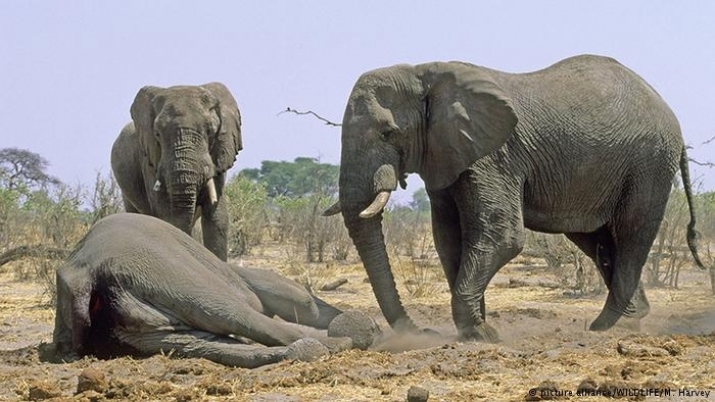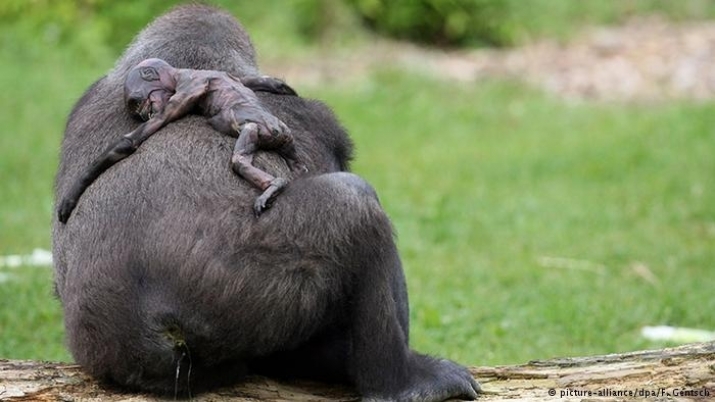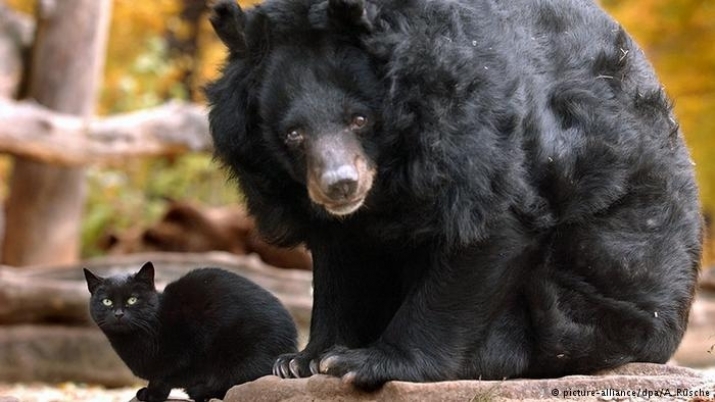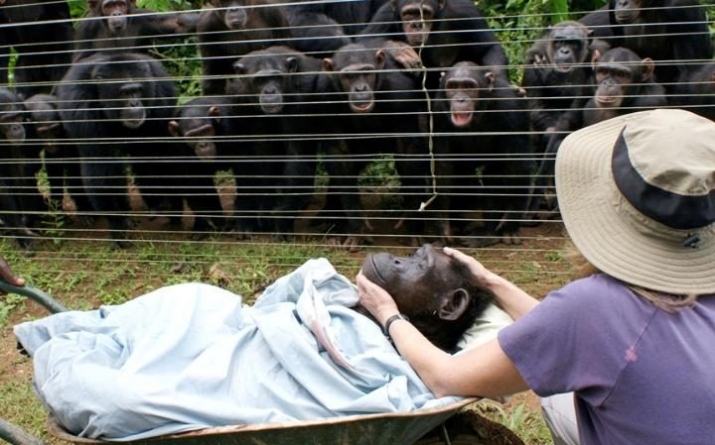NEWS
Do Animals Grieve?
 Elephants congregate around a dead herd member. Even elephants from other groups will visit when an elephant has died. From dw.com
Elephants congregate around a dead herd member. Even elephants from other groups will visit when an elephant has died. From dw.comWhen a dolphin mother carries the body of her dead offspring for days, is she in mourning? When elephants hold a vigil over a deceased family member, are they also grieving? We’re all familiar with the pain and anguish of losing a loved one, but do animals share the same experience? Science has long frowned on anthropomorphizing animals, attributing human feelings and emotions to account for their behavior, however a growing body of evidence suggests that many animals do share the capacity to feel grief and sorrow, mourning the loss of loved ones as keenly as humans.
Numerous animals, particularly higher mammals, are believed to experience a similar range of emotions to humans when faced with the loss of a loved one. Scientists have observed a growing number of species that behave as if stricken with grief—elephants, chimpanzees, giraffes, crows, and marine mammals have all been observed exhibiting signs of suffering when faced with the death of offspring or a close companion.
 Gana, a gorilla at Münster Zoo, was unable to accept the death of her baby her baby, Claudio, carrying his body for days and refusing to allow zookeepers to come close. From dw.com
Gana, a gorilla at Münster Zoo, was unable to accept the death of her baby her baby, Claudio, carrying his body for days and refusing to allow zookeepers to come close. From dw.comProbably the most closely studied animals in this regard are elephants, which have been recorded showing mourning behavior for both humans and other elephants. Renowned conservationist and wildlife researcher Cynthia Moss describes the behavior of a family of elephants after one of their group had been shot: “Teresia and Trista became frantic and knelt down and tried to lift her up. They worked their tusks under her back and under her head. At one point they succeeded in lifting her into a sitting position but her body flopped back down. Her family tried everything to rouse her, kicking and tusking her, and Tullulah even went off and collected a trunkful of grass and tried to stuff it in her mouth.” (Psychology Today)
Comparable behavior has been observed within communities of primates. Gorillas, one of our closest animal relatives, have been observed holding what appear to be wakes for dead companions. Donna Fernandes, president of Buffalo Zoo, relates the reaction of the long-time mate of female gorilla named Babs, who had died of cancer: “He was howling and banging his chest . . . he picked up a piece of her favorite food, celery, and put it in her hand and tried to get her to wake up. I was weeping, it was so emotional.” Some time later the zoo arranged for a funeral for Babs, and media reports recounted how members of her family filed into the room where the body lay, and gently sniffed the body of their beloved leader. (Psychology Today)
 There are also cases of animals grieving for members of other species. Muschi the cat and Mäuschen the Asiatic black bear became inseparable at Berlin Zoo. When the bear died, the cat refused to leave her companion's enclosure, meowing mournfully. From dw.com
There are also cases of animals grieving for members of other species. Muschi the cat and Mäuschen the Asiatic black bear became inseparable at Berlin Zoo. When the bear died, the cat refused to leave her companion's enclosure, meowing mournfully. From dw.comAmong marine mammals, a recent study has compiled evidence and observations of mourning behavior among seven different species: Indo-Pacific bottlenose dolphins, spinner dolphins, killer whales, Australian humpback dolphins, sperm whales, Risso’s dolphins, and short-finned pilot whales. The study, published in the Journal of Mammalogy,* identifies several ways in which whales grieve for their dead, for example, touching dead companions with their fins, carrying the bodies of deceased offspring, or circling their dead as if to protect the body from predators. The most likely explanation for this apparent desire to keep company with the corpses is grief, according to the study. “They are mourning. They are in pain and stressed. They know something is wrong,” says co-author Melissa Reggente, a biologist at Italy’s University of Milano-Bicocca. “We found it is very common, and [there is] a worldwide distribution of this behavior.” (National Geographic)
Examples of grieving have even been observed across species, most notably between animals and humans—in particular dogs and cats—but also in cases where more unlikely bonds have formed. In the US state of Georgia, for example, a strange friendship developed between a dog named Bella and a beaver. When Beavis passed away in 2012, Bella spent hours grieving by his side. But perhaps the most famous anecdote of love and loss in the animal world is the remarkable story Hachikō, an Akita dog in Japan. For almost 10 years after the death of his owner, a professor at the University of Tokyo, Hachikō would come daily to Shibuya railway station to wait for the train his owner would habitually return home on at the end of each day.
 A family of grief-stricken chimpanzees mourn the death of group member Dorothy. Workers at Sanaga-Yong Chimpanzee Rescue Centre in eastern Cameroon reported that the entire community rushed to the perimeter of their enclosure to pay their final respects. The normally lively animals stood silently with their hands on each others shoulders for comfort. From telegraph.co.uk
A family of grief-stricken chimpanzees mourn the death of group member Dorothy. Workers at Sanaga-Yong Chimpanzee Rescue Centre in eastern Cameroon reported that the entire community rushed to the perimeter of their enclosure to pay their final respects. The normally lively animals stood silently with their hands on each others shoulders for comfort. From telegraph.co.ukBuddhism has long taught that suffering is a universal aspect of life experienced by all sentient beings. As more scientific evidence accumulates, it becomes increasingly difficult not to recognize the bonds and common experiences shared by and between sentient beings. This theme is underlined by professor of anthropology Barbara King in her book How Animals Grieve (University Of Chicago Press, 2013), in which she poignantly observes, “Where there is grief, there was love.”
* http://jmammal.oxfordjournals.org/content/early/2016/05/23/jmammal.gyw089
See more
Grief in animals: It's arrogant to think we're the only animals who mourn (Psychology Today)
Do animals mourn their dead? (Deutsche Welle)
Just Like Humans, Whales Grieve For Their Dead (Nature World News)
Scientists find whales and dolphins mourn their dead too (Science Alert)
Chimps filmed grieving for dead friend (BBC)
Whales Mourn Their Dead, Just Like Us (National Geographic)
How grieving animals mourn their dead companions, in pictures (The Telegraph)
Related
Why Are Humpback Whales Saving Other Species from Orca Attacks? (Buddhistdoor Global)
Recognizing the Rights of Animals as Sentient Beings (Buddhistdoor Global)














